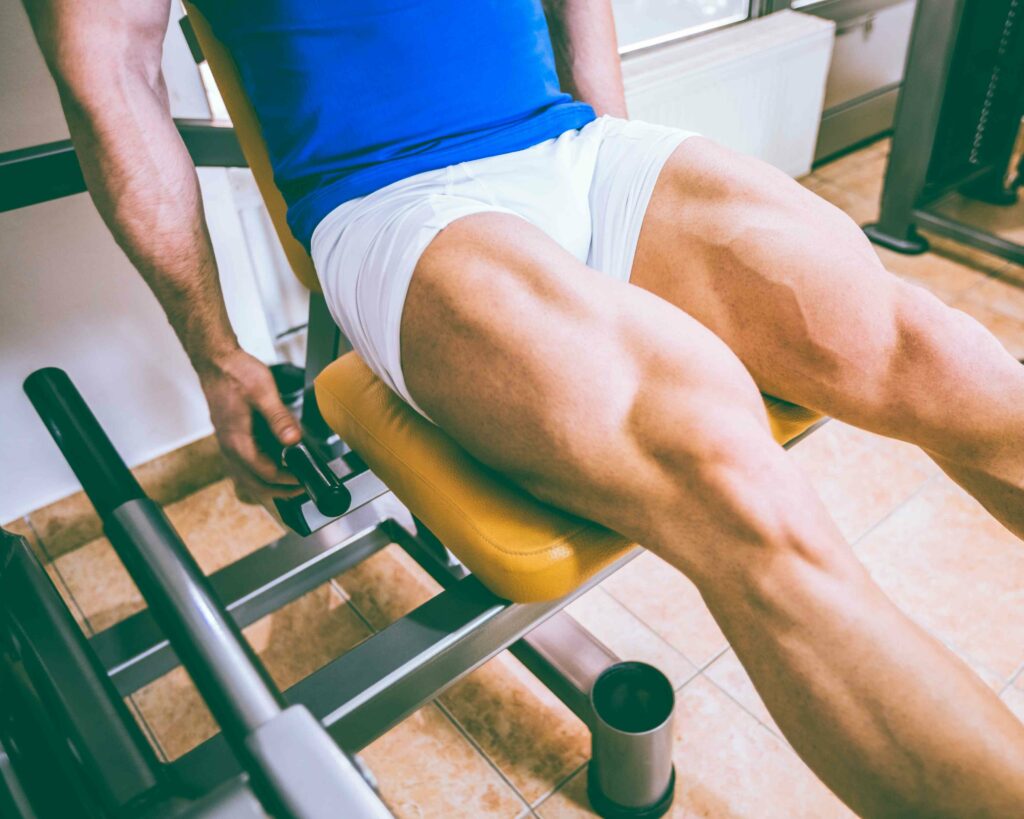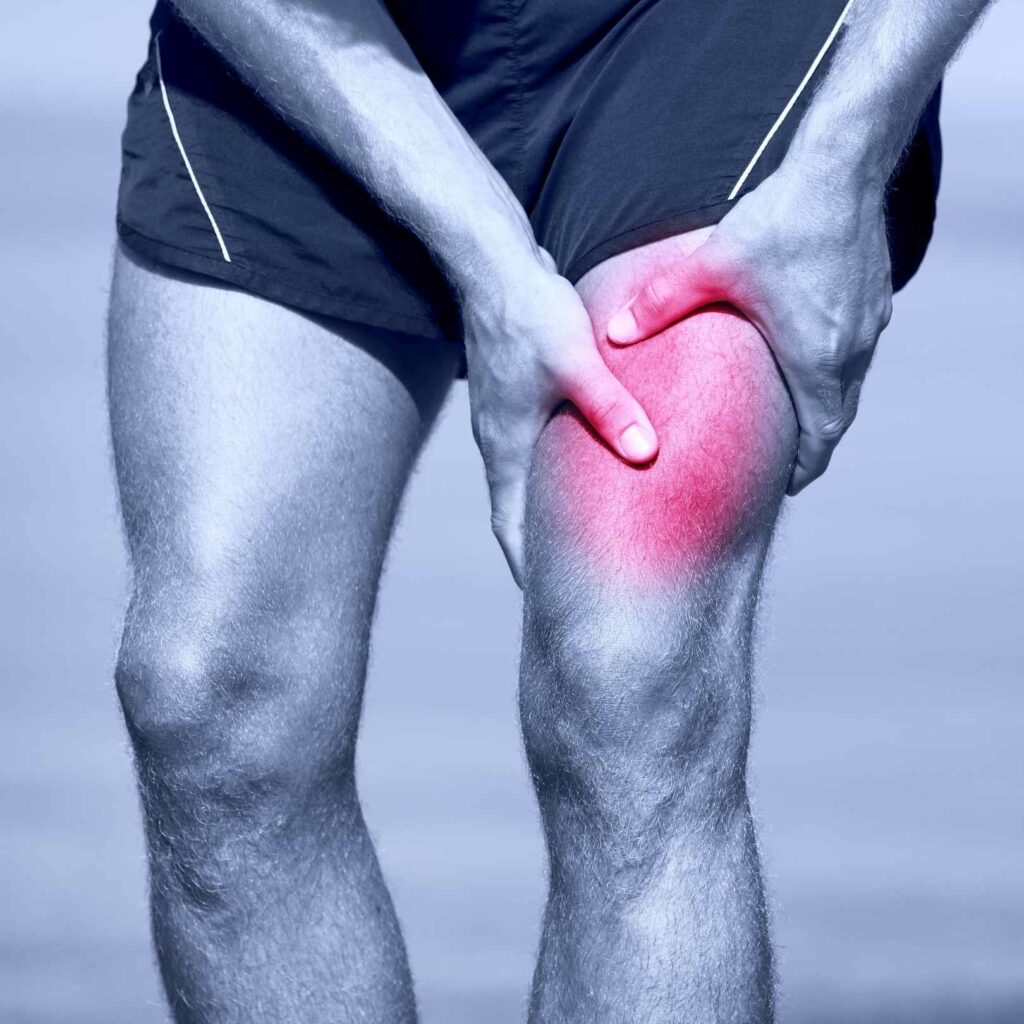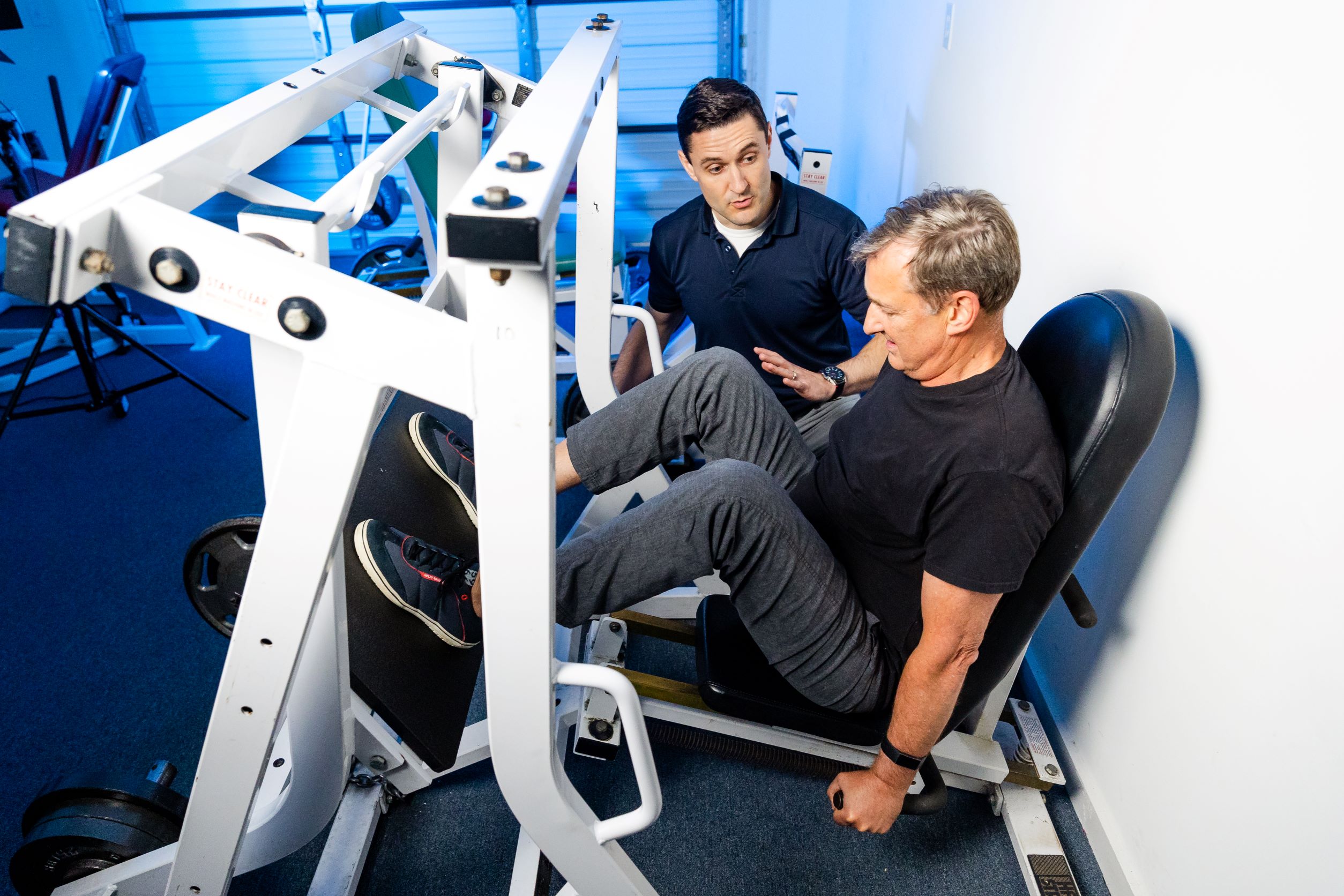Every day, at least one of our clients comments that leg training hurts!
“Why do they hurt so dang much?!
With our upper bodies, it’s much easier to achieve a deep fatigue, because we don’t have to overcome so much discomfort. As we fatigue, our arms simply stop working, as the muscle fibers become exhausted. And as we know, recruiting and exhausting our strongest (fast twitch) muscle fibers is key to reversing sarcopenia and retaining muscle mass as we age.
But with our legs, and especially in the quadriceps muscles in our thighs, it is far harder to get to this beneficial level of fatigue. As you may have experienced, we feel the strong urge to quit long before we actually *can’t* do another rep. I want to explain why this happens, and why it is so important to deal with it.

Legs hurt to train because of their size.
Part of the issue lies in the sheer size difference. Being much larger and stronger, our legs can burn huge amounts of energy in a short time. In an emergency, we’ll burn energy faster than oxygen can be delivered, which is called “anaerobic” (without oxygen) metabolism. This gets us energy quickly, but inefficiently, resulting in “waste” products such as hydrogen ions that make our muscles burn from the acidity.
And beyond the waste products, there is also the physical pressure within the muscles. When we deny blood flow (and thus oxygen) to a muscle, it can hurt. This isn’t unlike the discomfort we feel when we hold our breath – the body cries out for oxygen! And the muscles of the thighs are so large that, when they contract against heavy loads, they create enormous pressures within themselves. These pressures are so high that the heart can’t pump blood into a muscle that is actively contracting against a load above 60-70% of it’s maximum strength (also called MVIC). This means that when we are working hard on a set of leg extensions, the muscles essentially have to “hold their breath” because the pressures involved limit blood flow. As a result, the denial of oxygen greatly enhances the metabolic stress of the exercise, and can result in that painful burning sensation.
It’s important to note that this is not a harmful process. In fact, deliberately denying blood flow to a muscle (ischemic preconditioning) is likely to improve our resistance to fatigue, and even to improve outcomes and reduce the damage associated with blood flow restriction during surgery. The muscle “learns” to tolerate the stress of a low oxygen environment, and becomes more fit and durable as a result.

Burning legs helped our ancestors survive!
Beyond these two mechanistic reasons, there is also an insight we can draw from natural selection. For as long as we have walked the planet, humans have been at risk of getting eaten … at least until the past few centuries. We aren’t very fast, but our ability to flee to shelter, or back to our group, would have been crucial for survival for most of our existence as a species. And in order to run away, we would have needed our legs to remain “fresh” most of the time.
What this means is that people whose legs ached and burned from fatiguing exercise would tend to avoid such activities, and thus would be more likely to keep their legs ‘fresh’ enough to run away when disaster struck. People whose legs never hurt from exercise, on the contrary, would be more likely to exhaust their legs frivolously during foraging, hunting, or play. And as a result, they would be more likely to get eaten when chased, as their legs would be too tired to carry them to safety. This is a “just so” story, admittedly. But the thought experiment offers at least a plausible explanation for why muscle pain in our legs would have been advantageous to our ancestors. Your legs burn because you are descended from people who needed fresh legs to survive.
We aren’t adapted to our easy modern lifestyle.
Unfortunately, that ancestry leaves us ill-prepared for maintaining our strength into old age. As Daniel Lieberman highlights in his fascinating work, “Exercised,” we are naturally averse to the very types of exercise that give us benefits. We are hard-wired to avoid discomfort, which would have served us well when calories were scarce and predators were everywhere. But now, we must work against our instincts to avoid fatigue, because we live in a sea of hyperpalatable and calorie rich food, and our daily lives never force us to run, sprint, jump, throw, and wrestle like our lives depend on it.
Given that our legs simply hurt worse than our arms when we attempt to fatigue them, it’s probably no surprise that our legs atrophy more than our arms as we age. The very muscles we most depend on to stand, walk, drive, and escape danger are the most likely to atrophy, precisely because our instincts are to avoid working these muscles.
Effectively training your legs is easier with a personal trainer to coach you.
This is why, at StrengthSpace, we work so hard to help you deeply fatigue your legs. Knowing all this won’t make training legs any easier, I know. But by understanding this, hopefully you will feel motivated to place your trust fully in your trainer when they try to coach you through one more rep of leg press. Believe me, we know how much it hurts! But we also know how essential it is that we fight the fatigue-avoiding instincts to heave and bounce weights, or take rest breaks as we near muscle exhaustion.
Left to their own devices, our legs will get weaker and weaker, until we lose our ability to live and function on our own. Thankfully, with a safe, and challenging regiment of strength training once or twice per week, we can hold sarcopenia at bay, and preserve our muscle mass throughout the entire course of our lives.
Submit your review | |

